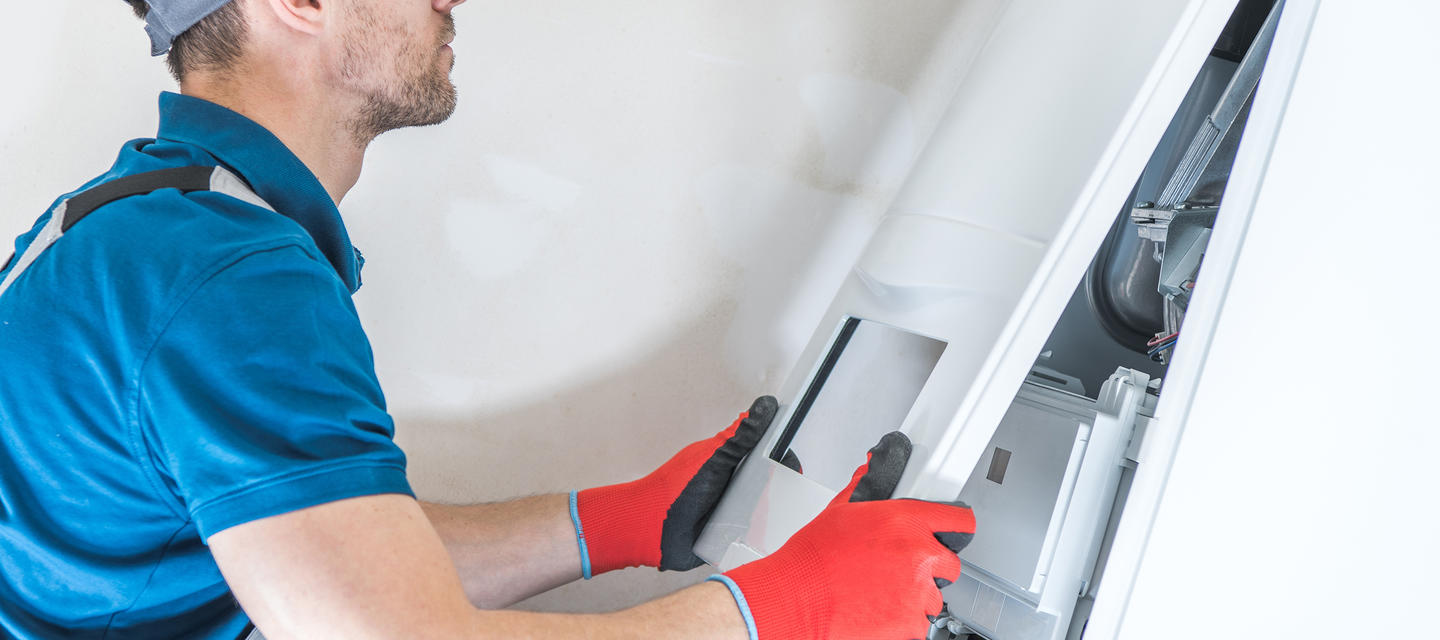Rochester Hills, Mich (September 14, 2020) - Heating, ventilation and air conditioning (HVAC) units, as well as large electrical units, are rarely noticed, but enrich our lives every day. These units have different functions, but the same basic construction. Their exteriors are usually a six-sided, metal cabinet consisting of fixed exterior panels and close-out panels designed to house, protect, transport, and allow service to the working components inside. One of the final assembly steps is attaching loose exterior panels to the unit.
Each panel may feature multiple attachment points, all requiring a time-consuming assembly action that could potentially cause an employee injury or potential damage to the interior components. Now consider an alternative assembly process, one where the final assembly takes place safely outside the unit and several fasteners can be engaged in one quick assembly motion. The efficiency gains and cost savings that this would create are massive.
This scenario is just one of the challenges that the sales and engineering community of ARaymond tackle every day as they develop assembly solutions.
Snap-fit design
With large-scale cabinets or units, several joints or attachments are needed to securely assemble each exterior panel. The exterior panels are usually flat and assemble to the cabinet shell. The shell of the metal cabinet consists of three to four sides (or top and bottom) formed into a cube from one piece of sheet metal. Material from the perimeter of the completed sides will be formed 90° to create a flange. It is onto the flange that the exterior panels can be attached. The number of attachment points required depends on the size of the unit.
“So, for example, let’s just say you need eight connection points around the perimeter of a side to secure the panel properly,” said Bob Taylor, Product Line Manager with ARaymond. “That means if you use the traditional nut and bolt assembly method, or even a specialty nut and bolt, you still have the responsibility of going through eight different locations in a single assembly. Eight assembly points equals eight cumbersome employee assembly actions, eight opportunities to cause damage to the unit, and eight possibilities of employee injury.”
Fortunately, the global engineering team at ARaymond believes there are better solutions that offer quick installation and long-term durability. To that end, ARaymond offers three different “snap- fit” fastening options that could be considered for attaching two sheet-metal surfaces, solving the above-mentioned assembly challenge.
“Snap-fit designs are especially useful in the automotive sector because they work well with injected molded trim pieces with multiple attachment points,” Taylor said. “Traditional snap-fit designs are usually a plastic-to-plastic or plastic-to-metal attachment. However, for a metal enclosure attachment, as discussed here, it’s usually a metal-to-metal attachment.”
The products
1. The right-angle trim clip.
This component clips on to the edge of the exterior panel and into a hole on the flange. Self-equalized retaining legs are formed into a dart-type configuration for
easy mounting — and to assure a snug, rattle-free installation. The darts would align to all eight of the corresponding holes in the flange, and all eight fasteners would be assembled at once.
2. The edge-mounted stud receiver.
This fastener has a self-aligning feature that snaps into a hole onto the flange. A specified stud is welded or assembled to the exterior panel. During final assembly, it’s necessary to align all of the studs with the retention feature on the edge-mounted clip. Once aligned, simply push them all in at once and they will ‘bite’ into the stud. In this case, the stud can be either smooth or threaded.
3. The hole-mounted stud receiver.
Typically used to attach trim strips, access plates, or any application where removability is a factor to a panel; the part snaps into the panel hole first and
then accepts a stud. As with the other options, simply insert the clips into a hole in the flange, align the stud properly with the fasteners and push the components together. A threaded or smooth stud can be used.
Of the three styles, options 1 and 3 can be considered for more aesthetic panels, while option 2 can be considered in more structural applications.
Advantages of snap fit designs
1. Assembly
A simple installation process that allows for multiple joints to be fastened at one time, with a simple snap of a clip.
2. Ergonomic benefits
These fasteners are installed from the exterior of the unit, creating a safer assembly environment. Awkward body positioning is eliminated and the number of assembly actions are reduced.
3. Finish
generally, these types of attachments provide a clean surface finish without any exposed screws or holes. Overall, the final assembly is smooth and looks clean.
Ideally, for any application, it’s important to consult with the manufacturer of the fastener directly and early in the product design stage to ensure the components used are the best ones for the application.
“Too often, we encounter projects where the fastener was considered last, designed or selected incorrectly for an application, and then when the fastener fails to work or hold up properly, it tends to get blamed,” Taylor said. “Far too often, the design or assembly method is the root cause of the issue, not the fastener. This is particularly important for snap-fit designs.”
About ARaymond
ARaymond Industrial, part of the global ARaymond Network, has been an expert in plastic and metal assembly solutions for more than 150 years. The company’s overriding objective is the creation of sustainable value for its customers, partners and employees. Throughout its history, ARaymond has learned how important it is to innovate intelligently — working on advanced assembly solutions for tomorrow while drawing on its vast experience and knowledge.
